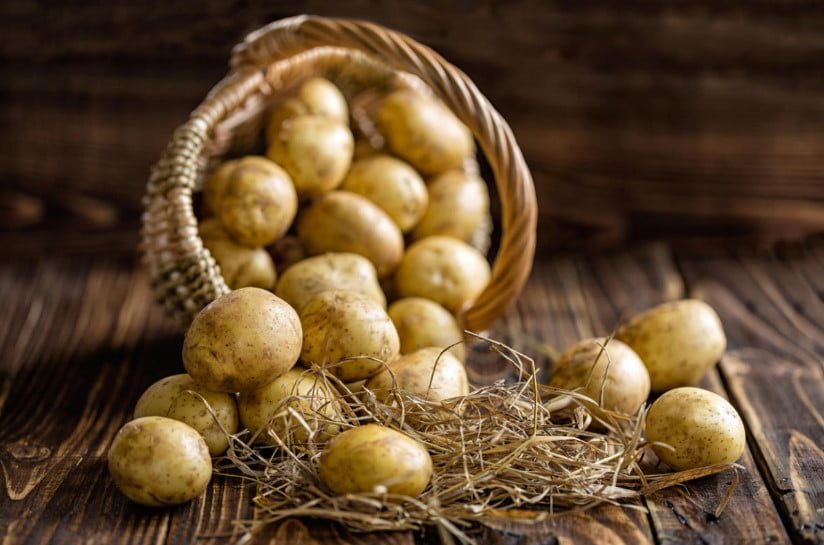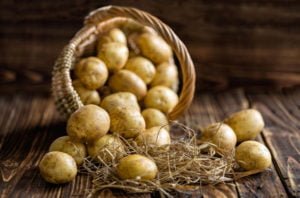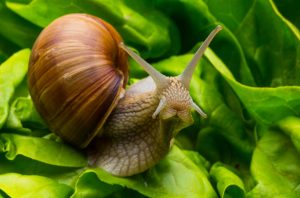All healthy potatoes are similar to each other, but each rot in its own way. Every year a “not potato” is produced: drought without the rain, somewhere in the rain and cloudy all summer. And everywhere, under completely different weather conditions, potatoes rot.
This is a continuation of the article called Fungal and Bacterial Rot of Potatoes. Part 1. And we settled on the fungal diseases of potatoes.
Fungal diseases of potatoes
Phomosis helps damp cool weather, which is during the harvesting, and improper storage conditions in basements and cellars.
During growth (at the end of flowering), phomosis appears on the stems (near leaf petioles) elongated oval spots without clear boundaries. Spots are inside the fabric, as if pressed into it. If the spots are located around the stem, it may break. Sometimes there are ulcers, in the center of the color is brownish, on the edges-dark brown.

On tubers, the phomosis is already in storage, that is, after cleaning, sometimes almost immediately, and sometimes after a long period of four months. At the time of preparation of seed for planting is already a lot of tubers rots. On the surface of the potatoes first formed clearly defined spots, hard to touch. They grow, become deeper, turning into ulcers, on which the skin is tightly stretched. If the humidity in the cellar is high, you can see the grayish mycelium of the fungus.
There are four forms of phomosis:
- surface: small, dark spots, can spread to the entire tuber, possible transition to ulcers, affected tissue dry;
- rounded ulcers: not spots, but a cavity that is larger inside the tuber than outside, the diseased tissue can be dry and wet;
- wedge-shaped ulcers: no larger than the size of the spot on the skin, but go inside the cone, the diseased tissue can be dry and wet;
- eye shape: dented spots on the site of the eyes, inside the tuber cavity with rays (channels) to the eyes, such tubers rot very quickly and completely.

Vulnerable places on the tuber-damaged skin, eyes and lentils. The infection in the field wanders with raindrops and wind, and in the cellars from the tuber to the tuber, is stored on potatoes, plant residues, cornflowers and sedge. Manifestations of the disease in some forms are similar to late blight, but the color is different. The Phytophthora brown with hints, and when famose diseased tissue may be yellow, pink and dark orange.
Fusarium ear rot or dry rot. Tubers are infected in the field, but the disease appears during storage: in violation of temperature and humidity, when the tubers are misted.

They form folds, as on the fabric when draping. First, the spots are brown-gray, depressed, the pulp under them becomes loose. Then there are voids, in them — fluffy mycelium, it can be white, reddish or yellowish.
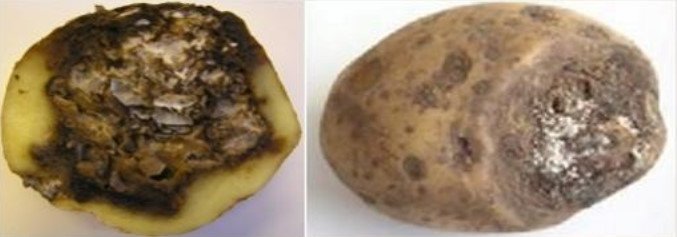
In the cellars, the infection is transmitted only to tubers with damaged skin.
Potato cancer. It is quite simple to find — on stems, stolons, tubers grow “cones”, slightly similar to the inflorescence of cauliflower; the color they have only at first white, then it becomes dark brown. “Cones” can be large, sometimes exceeding the size of the tuber.
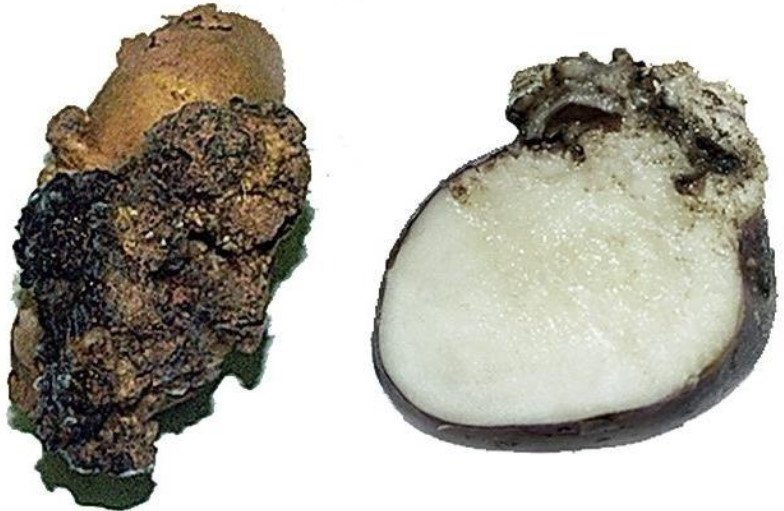
Sick stolons tubers are not tied, but grow, because each of them can form several “bumps”. And the tubers themselves at the time of cleaning become a mass of brown mucus with an unpleasant smell.

The source of infection up to 15 years can be stored in the soil, it is present in the manure, if the patient is fed potatoes to animals. Shovels, forks, hoes — tools, which the infection is carried on the site. Even snow and rain carry the pathogen.
Rubber rot. There are special manifestations of this disease. A suspicious tuber with spots and tissue, something resembling rubber under them, you need to cut. After 25 minutes, sometimes a little earlier, the cut will become pink, and from the damaged tissues begin to stand out brown liquid, which is called exudate, it will smell unpleasant fish. And the tubers themselves later become watery.
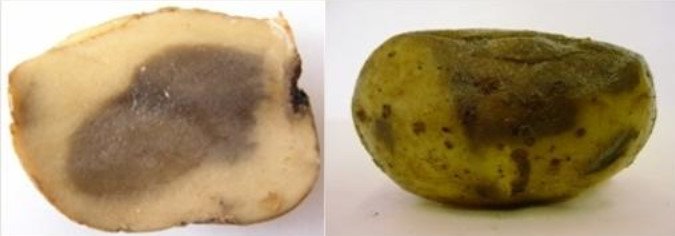
The disease on the tubers affects the sprouts. The infection moves to other points of growth and new sprouts do not appear.
Coal rot. It manifests itself during harvesting and storage. Next to the lentils and eyes appear watery black spots, the tissues under them begin to rot, as if freeing up space — ulcers appear.
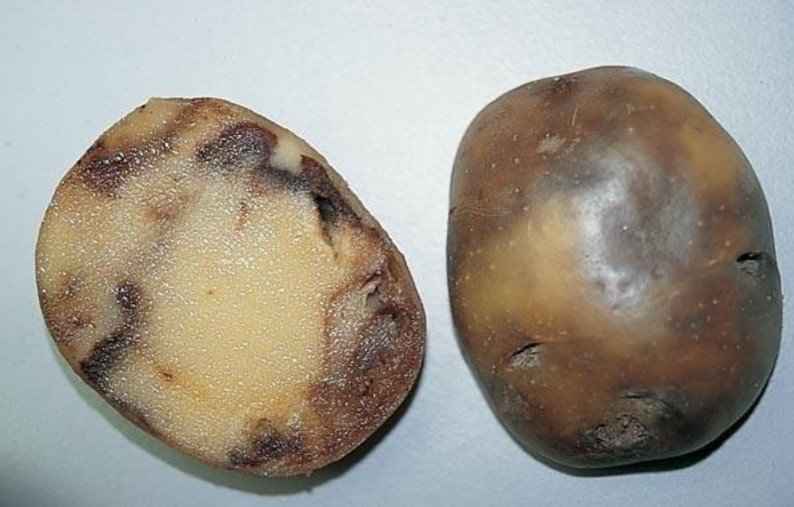
Sometimes, the internal tissue of the tubers rot. The color of the flesh changes.
The Sclerotinia or white mold. The fungus enters the plant through the root neck, manifests itself in July-August, during heavy rains. First, small spots of pinkish or white color appear on the stems, they can grow and merge, then a ring around the stem is obtained. The rot starts from the inside and from the top you can see the sores. It is seen that the stems of a lot of water, they begin to rot in these places break. The leaves are slightly yellow, but not always — can remain green.
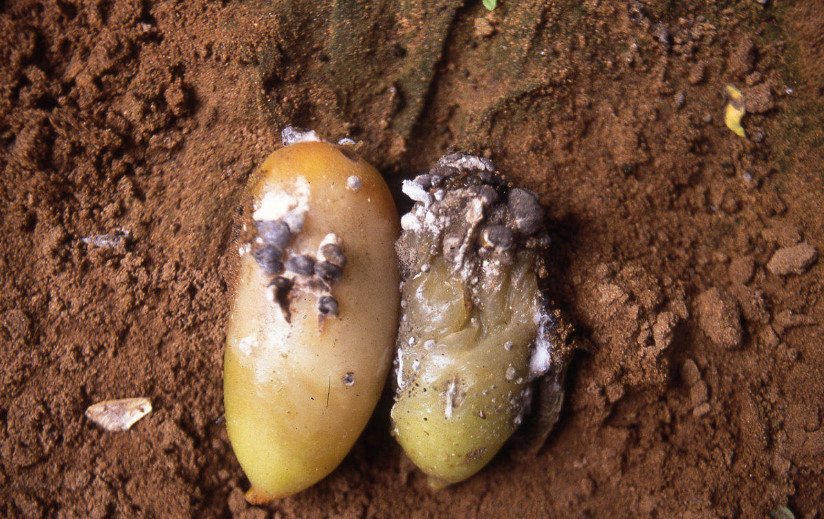
Tubers can be infected through any of the injured players place in the digging and cleaning of the vault or if there is a defeat of the other rot, and they get sick. The flesh becomes watery, there are voids inside the tuber, possible yellowish-brown spots.
Pink rot. On stems and leaves is yellowing and withering in the second half of the summer; stems become watery, dying occurs in the basal part.
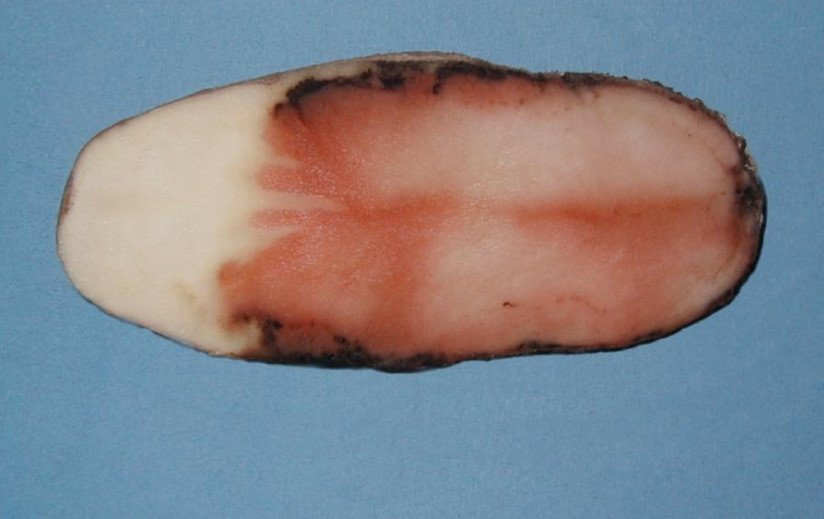
At the point of attachment of stolons, you can find spots they’re brown or dark lenticels are dying. If you press in this place on the tuber, the light liquid will flow. On the section of the tuber is visible diseased tissue pinkish-yellow, then it changes from brown-reddish to black. The flesh itself remains firm and elastic for some time, but eventually turns into rot with a characteristic smell.
Eyes are few in number rot. It affects the tubers. The disease begins with stolons, at the place of its attachment to the tuber. The affected area grows in size, and the tuber skin wrinkles, it is visible white “speckles” — pustules.
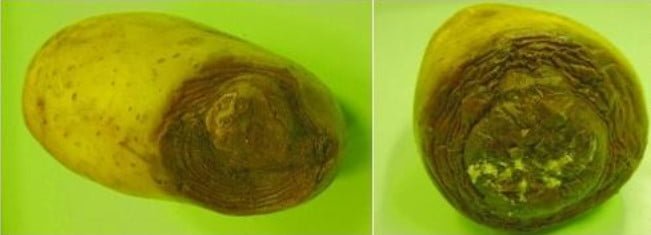
The flesh of the tuber from the table end becomes soft, dry, changes color to brown. In this place there are caverns, which is visible white mycelium.
Watery wound rot. It looks like a black leg, but there are differences. In this form of rot there are no signs of disease in the above-ground part of the plant. Tubers are affected: on their surface, wet spots of black color are first visible. Under them, ulcers are formed when they break through, liquid flows out. In the section of the tuber you can see that the flesh around the ulcers is wet and dark, and the area itself is separated from the rest of the tuber by a black rim.
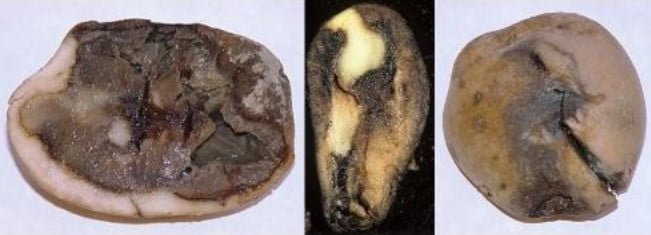
On the cut fabric eventually becomes brown, then black, with a distinct smell of alcohol. In the end, the tubers rot the inner part, the tissues outside of the rim (vascular ring) remain.
Bacterial disease
Brown bacterial rot. High humidity, high temperature and acidic soil — helpers of the infection. During flowering, when tubers are formed, bacteria fill the vessels through which the plant conducts water. It is fast, it is necessary only two or three days to keep the plants begin to wither: sometimes individual stems, sometimes all. Leaves turn yellow, shrivel, wither. The stems droop, turn brown, the lower part dries or rot, becomes soft and cracks along. The cut shows dark brown rings. From the stem to squeeze out the mucus of a brownish or dirty gray-white color. A tuber is also squeezed slime. Such tubers rot in the field and during storage, but the skin and a small crust layer under it can be preserved, from the tuber is only “shell”.
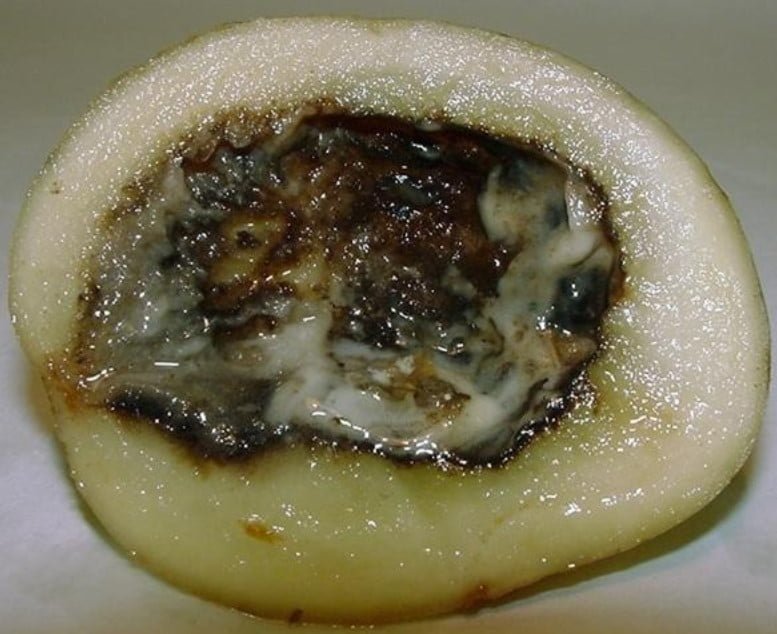
When the tuber rots in the nest, the soil becomes infected, the pathogen lives long. And in the soil, where it even accumulates, and in plant residues, and in tubers. And the gates are the wounds on the roots and stems that pierce, gnaw insects and nematodes. The second option is penetration wounds, puncture wounds, damaged skin, i.e. blemishes at harvest. Third-stomata.
Blackleg. Hurts everywhere, in wet years, you can lose up to three-quarters of the crop. If the weather helps, the disease develops actively, and the lower leaves begin to turn yellow already on shoots. They curl up and become rigid. Then the upper leaves turn yellow, while changing their position relative to the stem, as if they rush up. Color may be different, it depends on the variety and weather, but the variations are: brown — dark green-yellow. Become soft and stem base, and roots. The structure of the stem tissue changes, it can not keep its weight and falls. The plant dies. If you try to pull it out of the ground, the tops will come off at the root of the neck.

There is a slow development of the disease: the plant just lags behind the neighbors in growth, the leaves are shrinking. Sometimes in the upper parts of the stem rot young tissue, even to the point of desecration.
The signs of the disease are very similar for the incidence of black scurf, but if black scurf when pulling the Bush out of the ground the tops from the roots does not come off. Yes, and wet rot on tubers does not happen, unless both parasites attacked the plant at once.
This disease is also called soft (or wet) rot, because the rotting tuber.

The infection penetrates the tuber where it is attached to the stolon. First, just soften the pulp with almost no color change, and then formed cavity or the cavity, there is the wine smell. Sometimes the flesh of the tuber remains clean, but the tissues around the eyes are affected, and spots appear on the skin, as if their tissue dies off. The causative agent of the black leg affects other plants.
Ring rot. It is found everywhere! You could lose half the harvest. The disease affects all parts of the plant. If sick tubers were planted, some of them will not rise at all, rotting in the hole, and those that have risen are already sick, they begin to show symptoms early. On the leaves between the veins of the leaf surface changes color from green to yellow-pale yellow. The upper leaves turn yellow, become sluggish and thinned, their edges may twist upwards. Plants become dwarf.
If the planting tubers were weakly infected, the symptoms will appear during flowering: one or two stems will begin to wither, which will soon fall to the ground. Withering of the whole Bush will continue until harvesting.
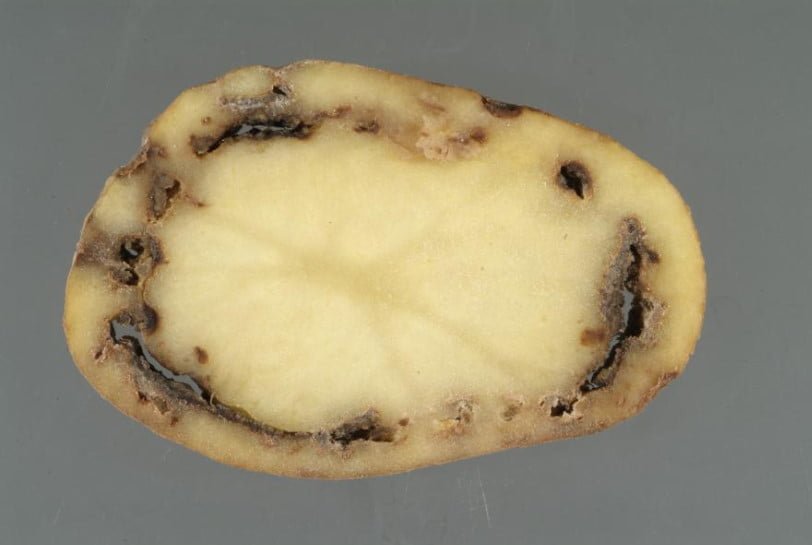
Sometimes the earth from the stems seeps mucous cream-yellowish mass-the exact symptom of ring rot. In tubers rings are formed, and under the skin — yellow spotting. The result of all-rotten wet mass with a disgusting smell. The disease can be transmitted with tubers for several generations without symptoms.
Many diseases in potatoes. I hope they’re past your garden.
